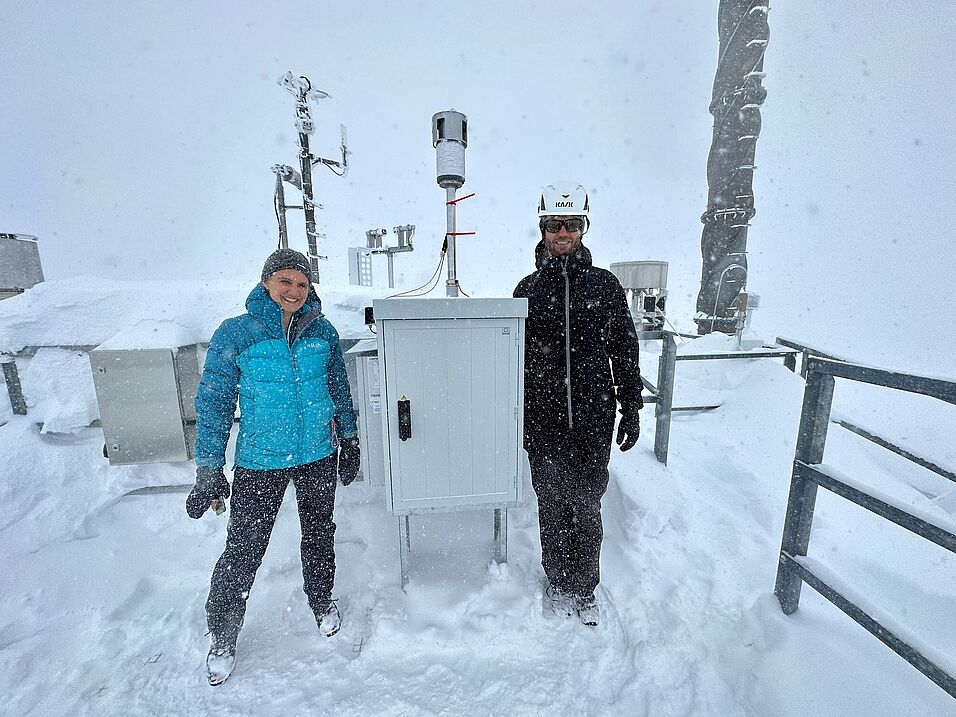The University of Vienna's Aerosol and Environmental Physics research group and GeoSphere Austria are collaborating in an aerosol measurement campaign focusing on detecting and characterizing coarse mode particles – including microplastics, biological particles, and mineral dust – at the high-altitude Sonnblick Observatory (SBO; 3106 meters above sea level) from April to November 2023. This research is conducted as part of the Vienna Network for Atmospheric Research (VINAR) joint research association between Geosphere Austria and the University of Vienna. Furthermore, this work is supported by the Austrian Academy of Science (Kommission Klima und Luftqualität), the research platform PLENTY, and by FWF within the PlasticSphere project.
Together with the well-instrumented SBO, the campaign utilizes the SwisensPoleno Jupiter, which combines holographic images with fluorescence and light scattering measurements for robust characterization of coarse-mode particles in situ and in near real time. In support of the physical characterization of aerosols, additional analyses will be conducted, including offline chemical analyses from TU Wien and particle transport modeling from the University of Vienna’s Dr. Andreas Stohl and the FLEXPART team. This research is expected to provide a comprehensive and valuable dataset that will enhance our understanding of the impact of coarse mode particles on the environment and human health.


